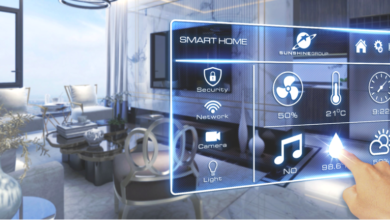How to Choose a Motherboard: 7 factors to Consider

When embarking on the journey of building your own PC, selecting the right motherboard is a crucial decision that can significantly impact your system’s performance and compatibility. In this guide, we will unravel the intricate process of choosing a motherboard, focusing on seven key factors that should be at the forefront of your decision-making process. Whether you’re a seasoned enthusiast or a first-time builder, understanding these factors will empower you to make an informed decision tailored to your specific needs and preferences.
Choose a Motherboard goes beyond the technicalities of compatibility; it’s about creating a foundation for your entire system. The motherboard acts as the central hub connecting all your components, from the processor to the memory and storage. As we delve into the intricacies of this essential PC component, we’ll explore considerations like compatibility with your chosen processor and RAM, the importance of expansion slots, and the impact of the BIOS/UEFI interface. Join us on this journey to demystify the motherboard selection process, ensuring your PC build is not just functional but optimized for your unique computing requirements.
How to Choose a Motherboard
Processor Compatibility
Choose a Motherboard: The motherboard must support your chosen processor. Check for the socket type and compatibility with the CPU model you plan to use.
RAM Compatibility
Ensure the motherboard supports the type and speed of RAM you intend to install. Some motherboards have limitations on maximum RAM capacity.
Form Factor Considerations
Choose a motherboard size (form factor) that fits your PC case. Common form factors include ATX, MicroATX, and Mini-ITX.
Expansion Slots
PCI Express Slots
Choose a Motherboard: Consider the number and type of PCI Express slots for graphics cards, sound cards, and other expansion cards.
RAM Slots
Check the number of RAM slots available and their maximum supported capacity. This is crucial for future RAM upgrades.
M.2 Slots
If you plan to use M.2 SSDs, ensure the motherboard has the necessary slots and supports the desired interface.
Ports and Connectors
USB Ports
Choose a Motherboard: Evaluate the quantity and type of USB ports. Consider the number of USB 3.0 and 3.1 ports for high-speed data transfer.
Audio Ports
Check the audio connectors, especially if you are using external speakers or headphones. Some motherboards feature premium audio solutions.
Networking Ports
Consider the type of networking ports, such as Ethernet or Wi-Fi. Choose based on your connectivity preferences.
Build Quality
Material and Durability
Choose a Motherboard: Consider the build material and overall durability. A sturdy motherboard contributes to system longevity.
Cooling Solutions
Evaluate the cooling solutions, such as heatsinks and fan headers, to prevent overheating during extended usage.
Brand Reputation
When it comes to choosing a motherboard for your PC build, considering the brand’s reputation is a fundamental aspect that can significantly influence your decision. The reputation of the motherboard manufacturer speaks volumes about the quality, reliability, and support you can expect.
Budget Considerations
Finding the Right Balance
Choose a Motherboard: Balance your budget by choosing a motherboard that meets your needs without unnecessary features.
Value for Money
When selecting a motherboard for your PC build, achieving value for money is a paramount consideration. Striking the right balance between features, performance, and cost ensures that you get the most out of your investment.
Brand Reputation
Researching Motherboard Brands
Choose a Motherboard: Research motherboard brands, read reviews, and consider customer ratings to make an informed decision.
Customer Reviews and Ratings
Gauge customer satisfaction by checking reviews and ratings online. Real-world experiences provide valuable insights.
Future-Proofing
Upgradability
Choose a Motherboard: Choose a motherboard that allows easy upgrades for future components, ensuring your system stays relevant.
Compatibility with Future Technologies
Considering a motherboard’s compatibility with future technologies is a strategic and forward-thinking approach when building a PC. As technology advances, new standards and features emerge, making it essential to choose a motherboard that can adapt and accommodate these changes seamlessly.
Warranty and Support
Length of Warranty
Choose a Motherboard: The length of warranty is a critical factor to consider when selecting a motherboard for your PC build. This aspect directly reflects the manufacturer’s confidence in the durability and reliability of their product.
Customer Support Availability
When it comes to selecting a motherboard for your PC build, the availability and quality of customer support from the manufacturer play a pivotal role in ensuring a positive overall experience
DIY PC Building Tips
Preparing for Installation
Choose a Motherboard: Proper preparation for installing a motherboard is a crucial step in the PC-building process. Ensuring that you approach this task with care and attention to detail can save you time and prevent potential issues. Here’s a guide on preparing for the installation of your motherboard:
Static Electricity Precautions
Before handling the motherboard, discharge static electricity from your body by touching a grounded metal object. Alternatively, wear an anti-static wrist strap to prevent accidental damage to sensitive components.
Clean and Organized Workspace
Clear your workspace of any clutter and debris. A clean, organized area provides a conducive environment for assembling your PC and reduces the risk of misplacing essential components.
Required Tools and Equipment
Gather all the necessary tools and equipment, including screwdrivers, standoffs, and any additional accessories that came with your motherboard. Having everything on hand will streamline the installation process.
Review the Motherboard Manual
Familiarize yourself with the motherboard’s manual. It contains essential information about the layout, placement of components, and specific installation instructions. Consult the manual for any unique requirements or recommendations.
Install I/O Shield
Before placing the motherboard into the case, install the I/O shield that came with it. This shield ensures a snug fit for your motherboard’s ports and connectors on the back of the case.
Install Standoffs
Verify that the case has the appropriate standoffs installed for your motherboard’s form factor. Adjust or add standoffs if needed, ensuring they align with the mounting holes on the motherboard.
CPU and RAM Installation
If you haven’t already, install the CPU and RAM onto the motherboard before placing it in the case. Follow the motherboard manual for correct installation procedures, ensuring a secure fit.
Connect Cables Outside the Case
Attach essential cables to the motherboard, such as power supply cables and front-panel connectors, before placing it in the case. This makes cable management easier and reduces the risk of pinching or misaligning connectors.
Align and Lower the Motherboard
Carefully lower the motherboard into the case, ensuring that the I/O ports align with the I/O shield and the screw holes align with the standoffs. Gently press down to secure the motherboard in place.
Common Mistakes to Avoid
When diving into the realm of choosing a motherboard for your PC build, steering clear of common mistakes is paramount to a smooth and successful experience.
Real-World Performance
Benchmarks and Reviews
Choose a Motherboard: Consult benchmarks and reviews to gauge real-world performance. Compare similar motherboards to make an informed decision.
Comparing Motherboard Performance
Consider performance differences between motherboards, especially if you have specific performance requirements.
Environmental Considerations
Energy Efficiency
Choose a Motherboard: Energy efficiency is a pivotal consideration in today’s tech-centric world, as we seek to minimize our environmental footprint and reduce energy consumption. In the context of motherboards, energy efficiency refers to the motherboard’s ability to operate with optimal power utilization while maintaining peak performance.
Eco-Friendly Features
Some motherboards come with eco-friendly certifications or features. Consider these if environmental sustainability is a priority.
Personal Preferences
Aesthetics and Design
Choose a Motherboard: Consider the visual appeal and design of the motherboard, especially if your PC case has a transparent side panel.
Customization Options
Look for customization options, such as RGB lighting or customizable heatsink covers, to personalize your build.
Read More: Securing Healthcare Systems: The Importance of IoT Cybersecurity Measures
Conclusion
In the realm of custom PC building, the motherboard serves as the backbone of your entire system, dictating its capabilities and future potential. As we conclude our exploration into the art of choosing a motherboard, it becomes clear that this decision is not merely about technical specifications but about aligning your hardware with your aspirations for your computer. By delving into factors such as compatibility, expansion slots, BIOS/UEFI interface, build quality, budget considerations, brand reputation, and future-proofing, you empower yourself to make a well-informed decision.
A motherboard that seamlessly integrates with your components, supports your endeavors, and allows for future upgrades ensures a satisfying and enduring computing experience.In the ever-evolving landscape of technology, where each component plays a vital role, your choice of a motherboard goes beyond the tangible specifications. It becomes a statement, reflecting your understanding of your system’s needs and your commitment to a personalized, high-performance computing environment. So, as you embark on your PC-building journey, may your choice of a motherboard be a cornerstone for a system that not only meets but exceeds your expectations.
FAQs
Can I use any motherboard with any processor?
No, it’s essential to check compatibility between the motherboard’s socket type and the processor you plan to use.
What is overclocking, and is it necessary for me?
Overclocking involves running your components at higher speeds than recommended. It’s not necessary for everyone but can enhance performance for enthusiasts.
How do I know if a motherboard is future-proof?
Look for features like upgradability, support for future technologies, and compatibility with upcoming hardware.
Do all motherboards come with built-in Wi-Fi?
No, not all motherboards have built-in Wi-Fi. Check the specifications to ensure the motherboard meets your connectivity needs.
Is it worth investing in a motherboard from a well-known brand?
Yes, reputable brands often provide better build quality, support, and reliability, making them a worthwhile investment.










